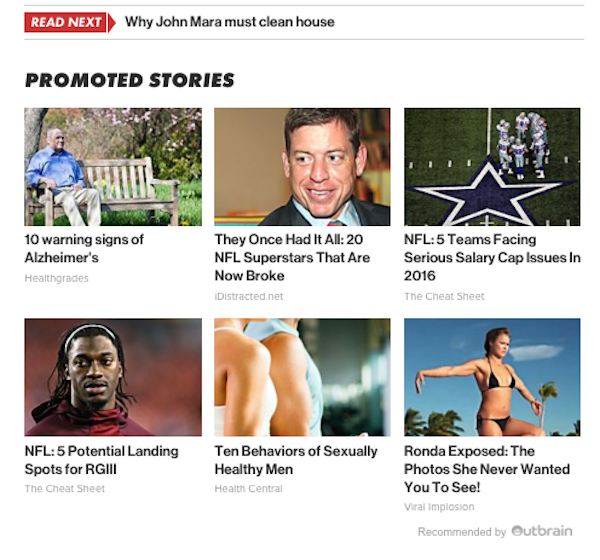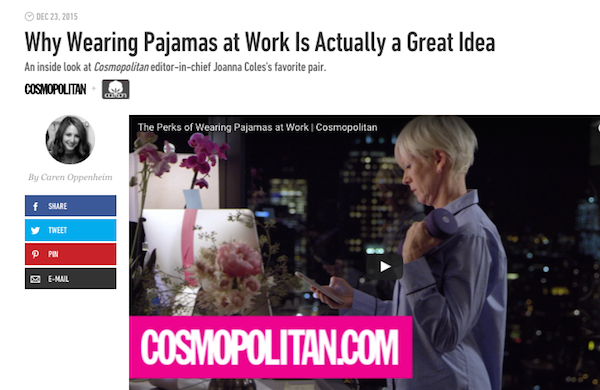The publishers that may need to change their native ads under new FTC rules

Advertisers and publishers always say they label native ads clearly enough that readers can tell ads from editorial content. But now that the FTC has issued tougher guidelines for native ads, some of them might have to change their practices.
For one thing, the FTC doesn’t like the labels “promoted” or “promoted stories,” saying they can be misleading to consumers. Publishers should use words like “ad,” or “sponsored advertising content.” The FTC allowed that using the advertiser name in the label (“Promoted by [advertiser name here]”) was reasonable. Still, that leaves a lot of publishers with a lot of work to do.
Only 30 percent of publishers are in compliance with the FTC’s new guidelines that address how ads are labeled, visibility of sponsor name and prominence of the label, said Todd Krizelman, co-founder and CEO of MediaRadar, which tracks and analyzes ad data. Fully 26 percent of websites run native without mention of the sponsor at all, his data shows. “The majority of publishers are actually going to be impacted by this announcement,” he said.
For starters, virtually no publishers use the word “advertisement” in their labeling. A review of 63 publishers’ native ads by native ad firm Nudge shows the most common terms were “sponsored,” used by 12.7 percent; “presented by” (9.5 percent); and “sponsor story” or “sponsored story” (7.9 percent).
The biggest offenders of the guidelines are going to be the content recommendation engines like Outbrain and Taboola, said Kunal Gupta, founder and CEO of Polar, a native ad platform. “These companies offer ad content typically labeled ‘from around the Web’ and ‘recommended for you.'”
Taboola’s widgets, for example, are often labeled as “promoted” or “sponsored” links and carry the industry standard ad choices icon to indicate that the content is an ad, but will review its current practices in light of the FTC news, said Shelly Paioff, deputy general counsel and head of legal at Taboola in the U.S. An Outbrain rep said that the labeling on its widgets is up to the host publisher, but that Outbrain has taken steps to make sure its paid listings are clear to users, including adding its “Recommended by Outbrain” statement.
Sites like the New York Post, below, which is typical in its labeling approach, could be in for some heightened scrutiny:

Now, the FTC says ad labels not only need to be clearly described, but stand out enough to get noticed — by size, placement and color. People often arrive at a native ad post through social side doors, so the FTC says that disclosures should be clear and prominent on the post’s page. “Because consumers can navigate to native ads in different ways, a clear and prominent disclosure also should be presented on the click-or tap-into page on which a complete native ad appears,” the FTC said.
One publisher that may fall short of this guidance is BuzzFeed. On its native ad article pages, the advertiser gets a byline as a “brand publisher.”

Similarly, this native ad on Cosmopolitan lists Cosmo plus the advertiser in a byline without spelling out the advertiser’s role in the post. The FTC says advertisers should avoid using “[c]ompany logos or brand names unaccompanied by a clear text disclosure.”

One a reader clicks through to a post, the FTC also says that publishers should make sure the disclosure is placed near the headline. “Consumers are most likely to notice and understand disclosures that are placed immediately in front of or above a native ad’s headline,” the new guidelines read
The FTC might have had in mind examples like this on Elite Daily, where the reader has to scroll down past the headline and image to see the disclosure.

Miguel Burger-Calderon, chief strategy officer at Elite Daily, insisted the publisher “always clearly labels its sponsored content.” The other aforementioned publishers declined to comment or haven’t responded to a request for comment.
More in Media

Publishers revamp their newsletter offerings to engage audiences amid threat of AI and declining referral traffic
Publishers like Axios, Eater, the Guardian, theSkimm and Snopes are either growing or revamping their newsletter offerings to engage audiences as a wave of generative AI advancements increases the need for original content and referral traffic declines push publishers to find alternative ways to reach readers.

The Guardian US is starting its pursuit of political ad dollars
The Guardian US is entering the race for political ad dollars.

How much is Possible’s future in Michael Kassan’s hands?
Some people in the know at Possible said they see the conference taking a bite out of Cannes’ attendance, most acutely by U.S.-based marketers who could save money by staying on this side of the Atlantic.





